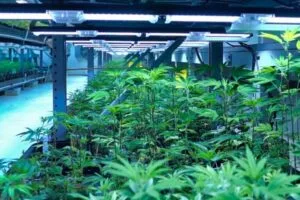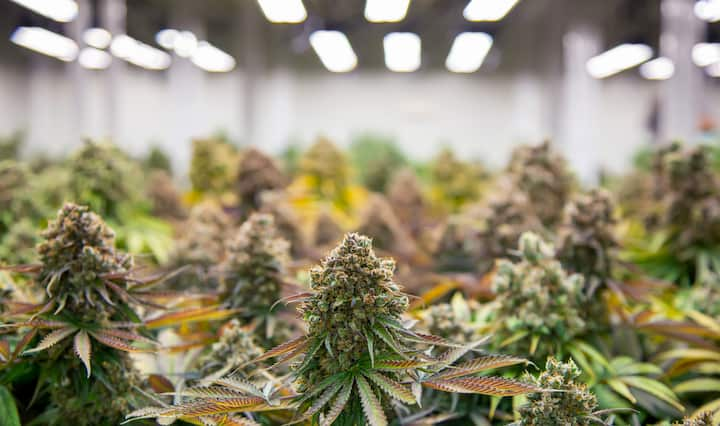LED enterprise transformation needs to cooperate with industry and research plant lighting is required to LED lamps and plant cultivation platform effectively docking in order to obtain the best application benefits. At the same time, the development of technical parameters of LED plant lighting is very critical, requiring a large number of experiments to reveal the physiological laws of plant light quality.
So efficient, plant lighting companies should cooperate with facilities in the field of horticulture research institutes, the implementation of strong alliances and professional division of labour, for specific plant species or varieties of the optimal light environment parameters and cost-effective LED lamps and lanterns design, combined to obtain efficient LED plant lighting system.

In addition, the way in which the plants are hung is very important. Optimised hanging methods make full use of the cold light source characteristics of LED plant lights, taking into account the irradiation area and obtaining the best light benefits. Taking indoor cultivation of (industrial) cannabis as an example, the technical parameters of the (industrial) cannabis light environment are particularly important, and the few research results on the parameters of the (industrial) cannabis light environment in the past, when (industrial) cannabis was not legalised, deserve attention.
Indoor cannabis grow lights depend on the international market
In recent years, the sales market for plant lighting LED luminaires has consisted of both domestic and international markets, focusing mainly on two areas: facility horticulture and (industrial) cannabis production. Currently, Chinese LED plant lighting products are mainly exported to the European and American markets, thanks to the gradual legalisation of cannabis cultivation in North America. However, the domestic market has yet to be developed and cultivated, the potential should not be underestimated.
Facility horticulture market segments need to be developed urgently
The activation and cultivation of facility horticulture users is the basis for the long-term development of LED plant lighting industry. However, based on the complexity of facility horticulture production, the research and development of facility horticulture LED lighting system has diversity and technical difficulties, must be revealed in the facility plant light quality physiological characteristics of the premise, according to the cultivation platform requirements for the design of LED lamps, in order to effectively implement the light environment control.
Greenhouse horticulture LED lamps to replace high-pressure sodium lamps is an inevitable trend, facilities for pasture, medicinal plants, fruit trees and other emerging horticultural industry continues to emerge, LED lighting will become the future of facility horticulture standard equipment, essential to the realisation of the future of intelligent horticulture.
Cost-effective improvement of LED plant lights
Higher yield quality effect and good visual health effect is the basic goal of LED plant lighting, but also an important principle to measure the cost-effectiveness of LED lamps and lanterns. Higher yield quality effect can be obtained through the reasonable coupling of spectral modulation, intelligent control and plant cultivation platform. Good visual health can be obtained through spectral modulation, secondary optical design and irradiation angle control. Of course, the development of cost-effective LED lamps is based on the premise of advanced semiconductor chip technology, and its energy-saving efficiency and photoelectric conversion efficiency can not be fundamentally controlled by the back-end luminaire design.



Challenges
One of the biggest challenges is the high cost of plant lighting systems. LED grow lights, which are the most efficient type of plant lighting, can be expensive to purchase and install. This can make it difficult for small-scale farmers and home gardeners to adopt plant lighting technology.
Another challenge is the lack of standardization in the industry. There is no one-size-fits-all solution for plant lighting, as the optimal light spectrum for a plant will vary depending on the species, growth stage, and desired outcome. This can make it difficult for growers to choose the right lighting system for their needs.
In addition, there is a need for more research on the impact of plant lighting on different crops. While we know that plant lighting can improve yields and quality, we need to know more about the specific effects of different light spectra and intensities on different plants.
Finally, there are regulatory challenges that need to be addressed. In some countries, there are restrictions on the use of artificial lighting in agriculture. These restrictions need to be reviewed and updated to reflect the latest scientific evidence on the benefits of plant lighting.
Despite these challenges, the plant lighting industry has the potential to make a significant contribution to food security and sustainability. By addressing the challenges outlined above, we can help the industry to reach its full potential and have a positive impact on the world.
